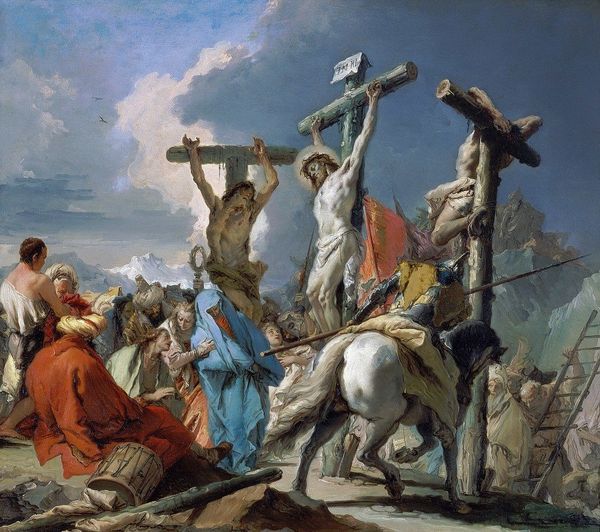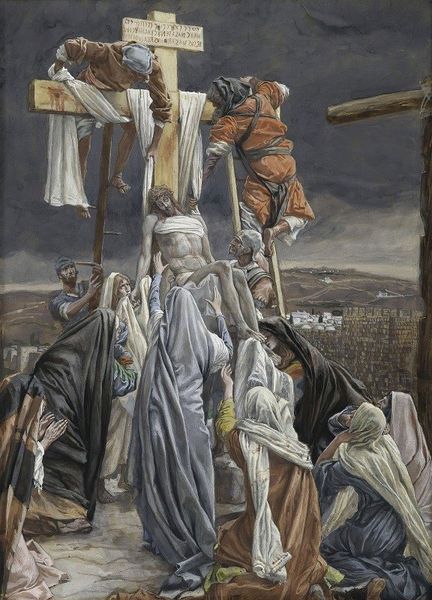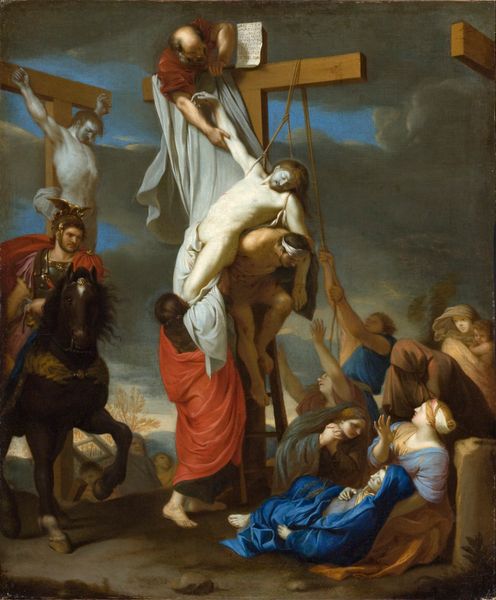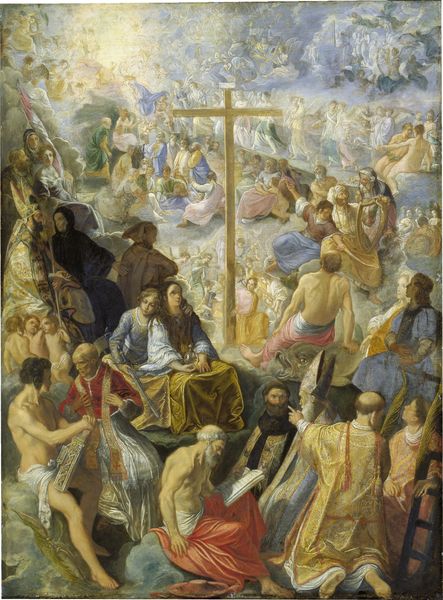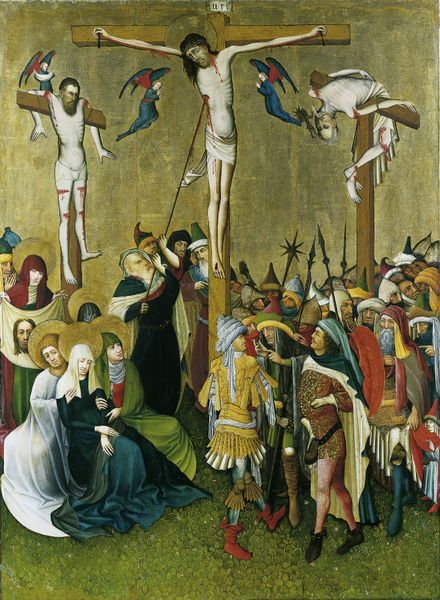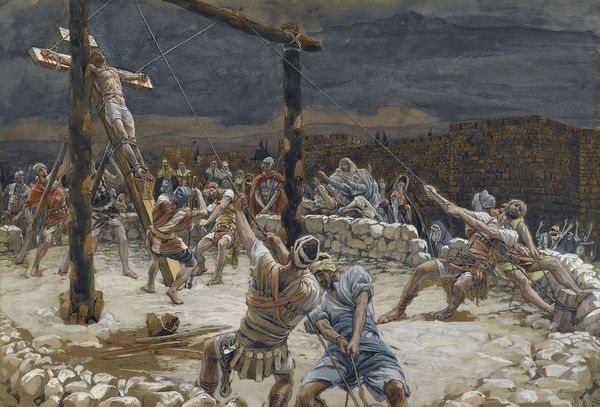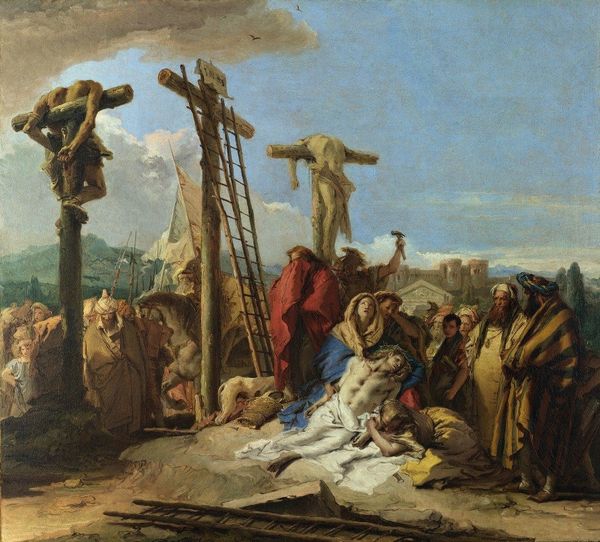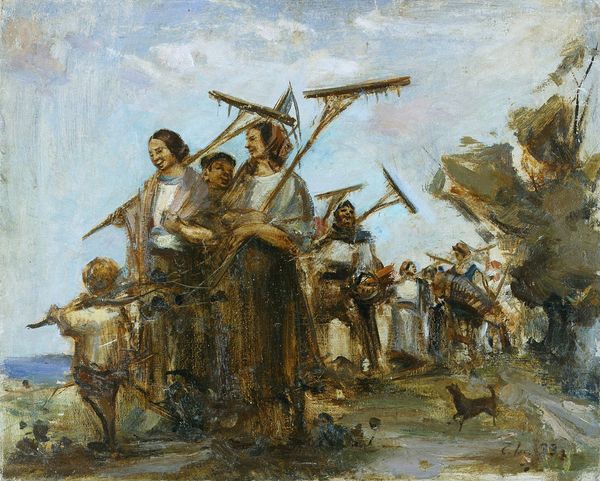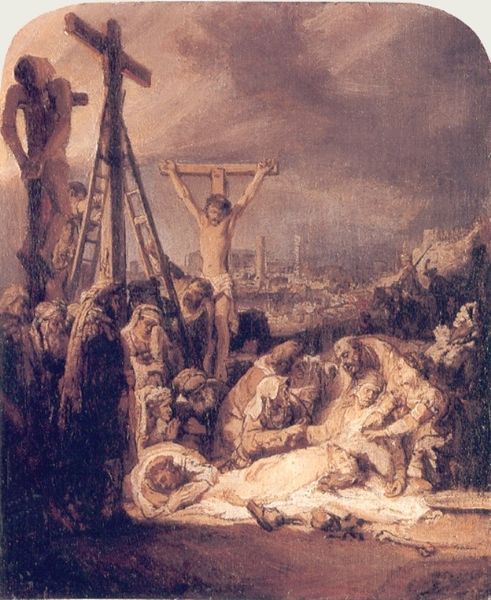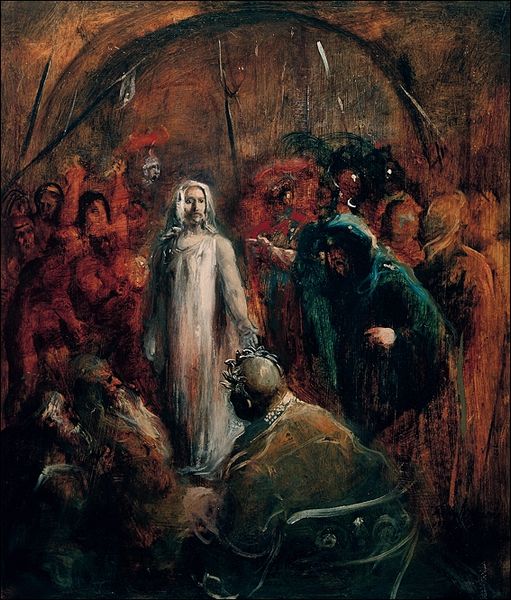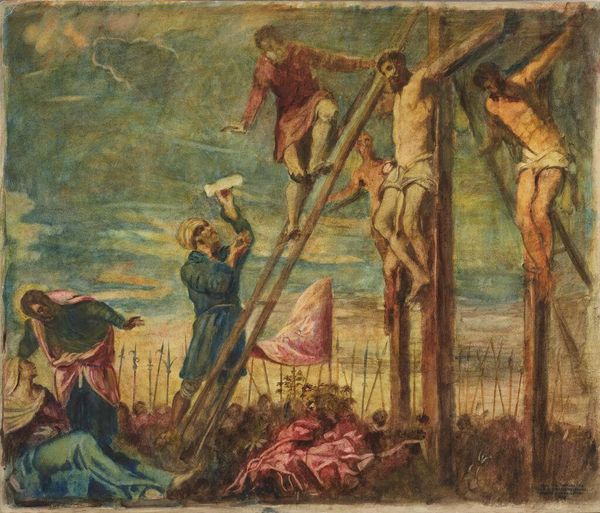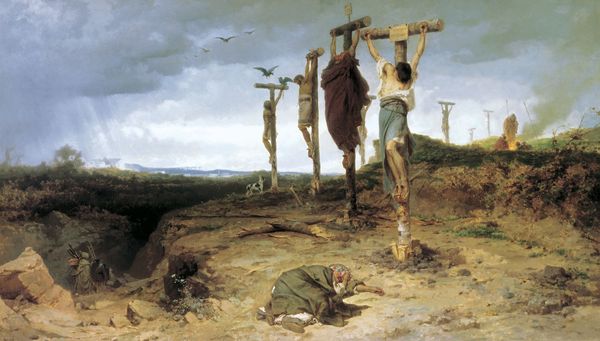
Copyright: Public Domain: Artvee
Curator: Looking at this sketch, titled "Christian Golgotha" by Henryk Siemiradzki from around 1880, the raw brushstrokes and the subject matter create a really somber mood. It definitely stirs up strong feelings. Editor: Yes, the somber mood strikes me immediately as well. It’s stark, isn't it? The hazy sky behind the crosses amplifies the scene's emotional impact. But look closer—I notice recurring cruciform shapes embedded within the whole composition, the beams themselves echoing downward into the earth. The association between the body and earth seems pronounced here. Curator: I completely agree. We should explore the role of figuration in 19th-century history painting, focusing on how the crucifixion narrative served to comment on issues of power, sacrifice, and even martyrdom. Especially the ways in which ideas about femininity and sacrifice were being cemented at this moment. Who are the subjects we're meant to mourn for? Editor: The figures carry heavy symbolic significance. The act of bearing witness also strikes me. How does this image and similar images serve to forge community or religious and cultural unity. Consider for instance the visual elements that recall the artistic traditions before this period. There is baroque influence that makes itself present here, while using realism in capturing light and figures adds another layer of richness. The symbolic and formal relationships really make a painting such as this quite extraordinary. Curator: Exactly. I'm also struck by what feels distinctly modern. Here the loose, almost unfinished quality reflects shifts in artistic thinking in the 19th century about acceptable ways of displaying brushwork, emotion, and especially, faith. What are we, as a modern audience, invited to do with images such as this now? Editor: It's true that while this scene resonates with religious iconography that continues to function in the cultural psyche. Ultimately the strength of this image rests on its ability to convey deep emotion using very precise arrangement and brushwork. It brings so much insight. Curator: Definitely. I see this artwork speaking to how painting during this period wrestles with power, politics, and new forms of cultural authority. Editor: And for me, considering the iconographic traditions and how visual memory functions in relation to these established images of violence, trauma, and religious significance adds dimension and layers to one’s engagement with a painting.
Comments
No comments
Be the first to comment and join the conversation on the ultimate creative platform.
